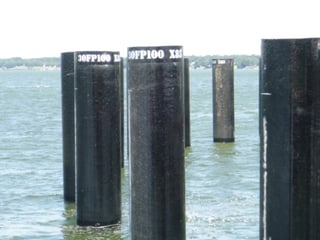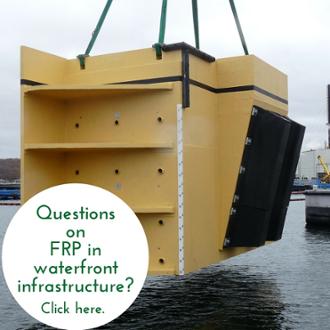Last year divers took to the murky depths of Baltimore’s waterfront to tackle the gargantuan task of repairing and rebuilding the port city’s aging infrastructure. Near zero visibility, wood timbers dating back to 1923 and vintage 1930s concrete were just a few of the challenges facing the SCUBA team (who also had to work around the port’s busy shipping schedule). When it comes to piles and fender applications, there’s no doubt that treated wood, precast concrete and steel piles offer certain benefits. Projects like Baltimore’s also point out the deficiencies of these choices. Low capacity and poor durability limit the lifespan of wood products. Steel and concrete piles have enjoyed wide use for most waterfront applications until now. However, Fiber Reinforced Polymer composites are gaining traction among both designers and contractors.

Corrosion resistance, high-strength and low stiffness (relative to steel and concrete) make FRP a cost-effective solution for piles and fenders. Corrosion resistance is a no brainer in a marine environment. FRP’s strength is comparable to steel. But it's the lower bending stiffness (EI) of fiberglass that makes FRP superior to steel and concrete. Think about vessel impact - lower stiffness translates to superior energy absorption. When laterally loaded, FRP piles’ higher deflection dissipates more energy, a characteristic that makes it an ideal choice for protecting other high-value waterfront infrastructure like bridge piers, piers and wharves.
Ferry terminal landings are another perfect choice for FRP piles. The material’s ability to deflect means a soft landing for ferries despite strong currents and wind. The lower deflection of steel and concrete piles can contribute to potential vessel damage as well as jolting riders and compromising their safety. FRP piles are better for both the vessel making the hit and the structure that is taking it. Consequently, FRP piles also reduce maintenance costs for ferry operators. Take a lesson from Baltimore and avoid future overwhelming rehabilitation efforts.

